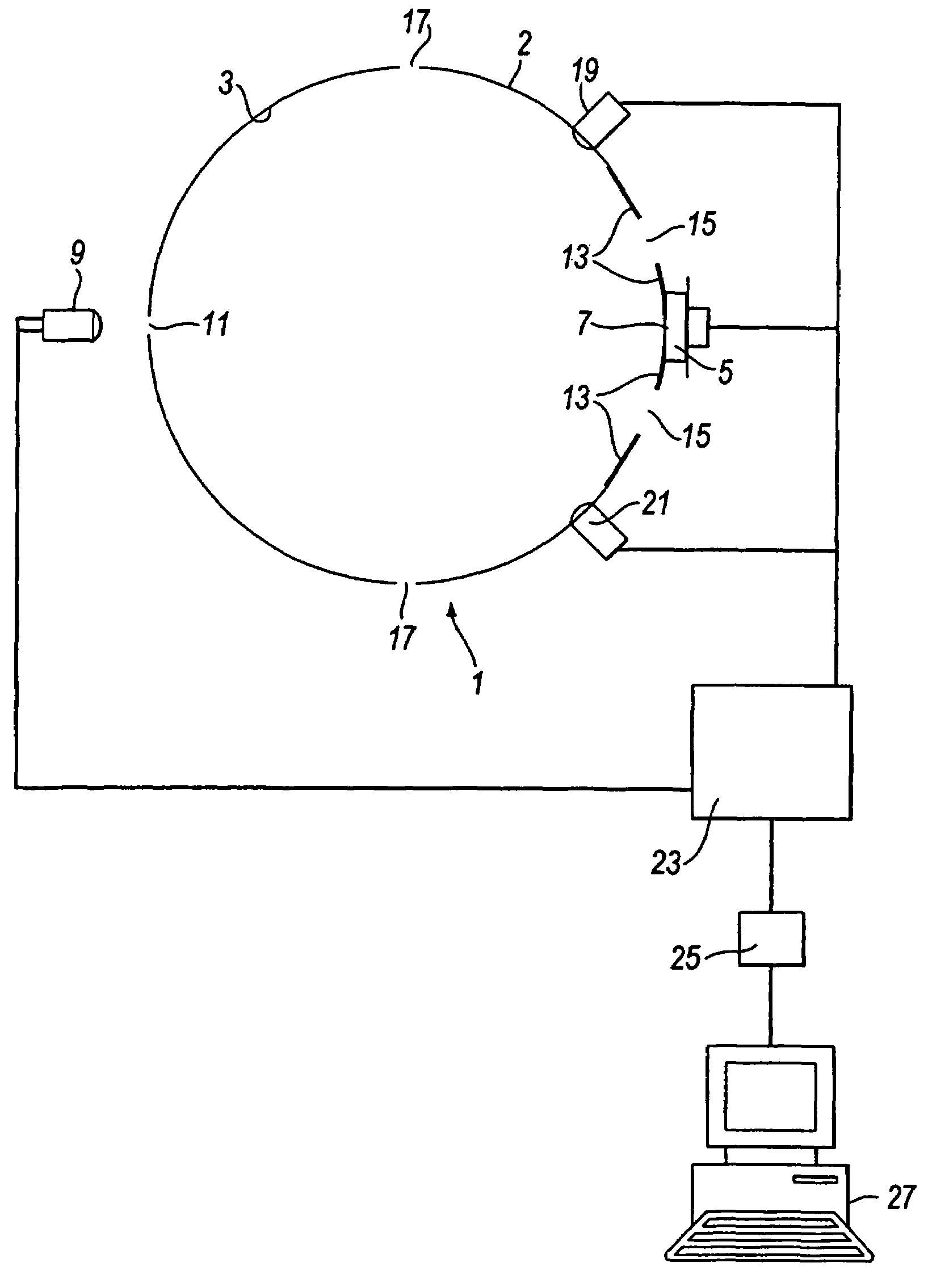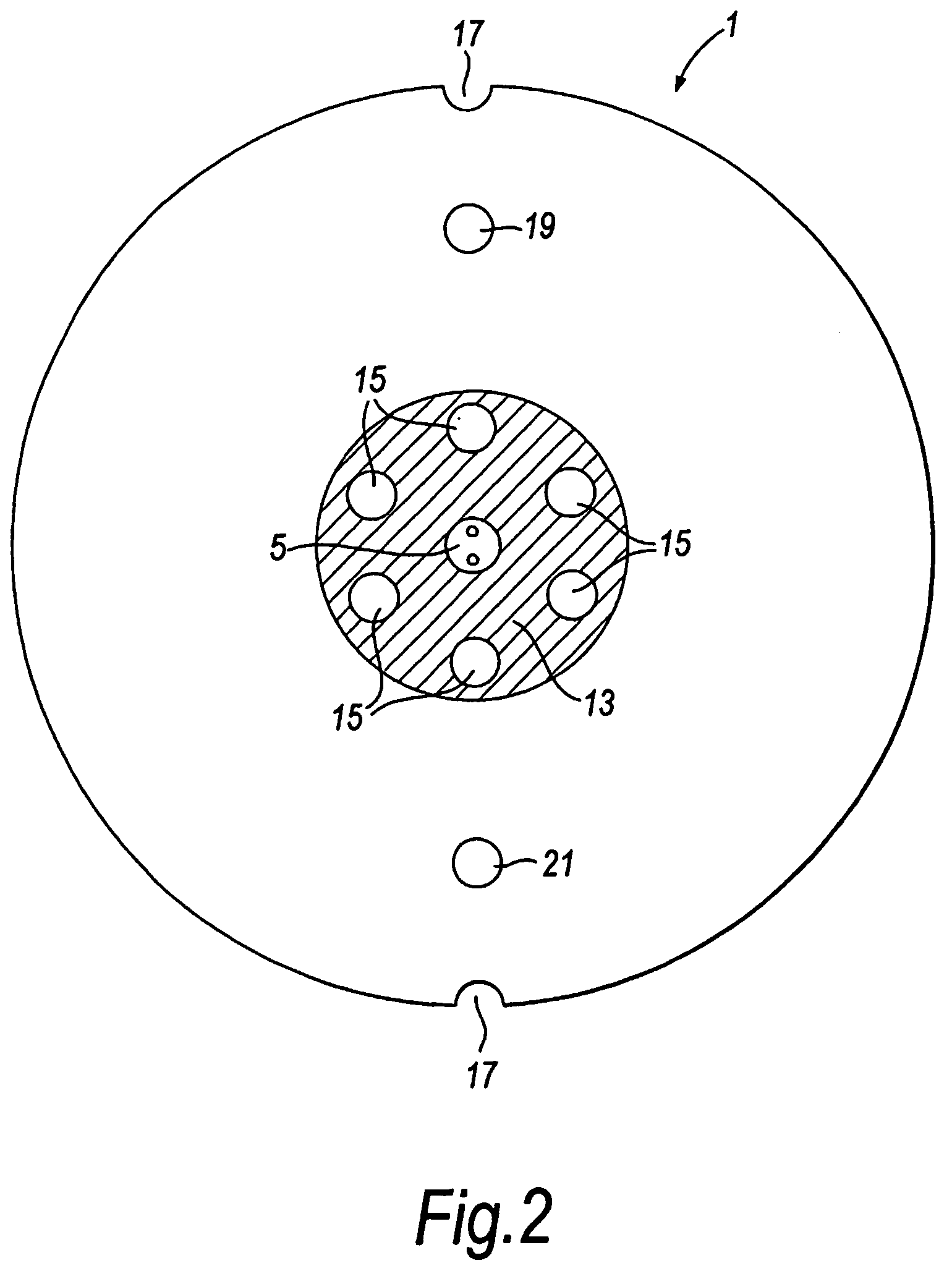Smoke detector
a detector and smoke technology, applied in the field of particle detectors, can solve the problems of large measurement stability demands, typically unoccupied obscuration detectors, etc., and achieve the effects of reducing the detection signal, reducing the background signal, and compromising the performance of the integrating spher
- Summary
- Abstract
- Description
- Claims
- Application Information
AI Technical Summary
Benefits of technology
Problems solved by technology
Method used
Image
Examples
Embodiment Construction
[0023]The smoke detector 1 comprises a hollow sphere 2 machined from aluminium alloy (or other suitable material) with an internal diameter in this example of 50 mm. Most of the internal surface 3 of the detector 1 is coated with a material in order to provide the surfaces so coated with a substantially high reflectivity (greater than 90%) Lambertian surface. A suitable material is barium sulphate. An integrating detector 5, for example a Centronic OSD5-1T silicon photodiode of 5 mm2 sensitive area, mounted on the exterior surface of the sphere 2, views a large portion of the white, inner surface 3 through a 5 mm diameter aperture 7. A scattering detector 9, for example an NSL710 silicon photodiode, is mounted on the exterior surface of the sphere 2 opposite the integrating detector 5 and is lensed so that it has a restricted viewing angle through aperture 11. A black painted region 13 of the internal surface of the sphere surrounds the integrating detector 5. One suitable black pai...
PUM
| Property | Measurement | Unit |
|---|---|---|
| reflectivity | aaaaa | aaaaa |
| distance | aaaaa | aaaaa |
| length | aaaaa | aaaaa |
Abstract
Description
Claims
Application Information
 Login to View More
Login to View More - R&D
- Intellectual Property
- Life Sciences
- Materials
- Tech Scout
- Unparalleled Data Quality
- Higher Quality Content
- 60% Fewer Hallucinations
Browse by: Latest US Patents, China's latest patents, Technical Efficacy Thesaurus, Application Domain, Technology Topic, Popular Technical Reports.
© 2025 PatSnap. All rights reserved.Legal|Privacy policy|Modern Slavery Act Transparency Statement|Sitemap|About US| Contact US: help@patsnap.com



